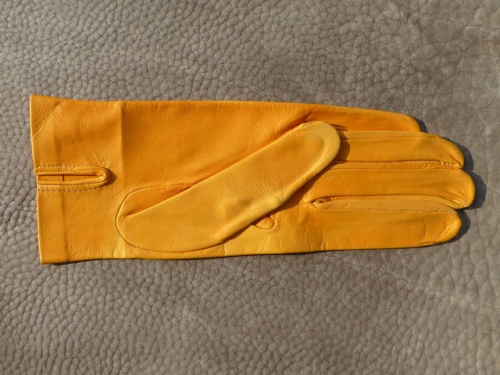Haptic evaluation of leather surfaces
Contents
Haptic of leather
Haptic relates to the sense of touch (feel), as well as the look of an object, with regards to its material characteristics, surface structure and consistency.
The term "grip" is also used to describe the feel of a leather. "A buttery napa leather," a "waxy" grip of a fine aniline leather, the "plastic-like" grip of strong coated leather, or the "parchment-like" grip of an old, dry, thin leather are all used to describe the feel of leather. Also, the stiffness, elasticity, warmth and coldness of a material come under the haptic properties.
A good quality leather feels warm and soft.
Softness of leather
Leather is made up of a mesh of many infinitely small fibre connections. The looser these are, the softer the leather. The flexibility of these collagen fibres also has an effect on the softness of a leather. The tanner can shape the softness by greasing. But, in almost every step of tanning, the tanner affects the strength of the final product. An embossed or ironed leather will always feel firmer than un-embossed and un-ironed leather. Softening and optimal greasing ensures extra soft leather. Any tannins applied also influence the softness of the final product. If a leather is not tanned, but only dried, it is then called parchment, which is very hard and stiff.
The firmness of these fibres depends on the animal species. Due to its structure, a crocodile leather is always stronger than lamb leather. The fibre connections are also different within a skin. They are more loose on the flanks than in the middle.
Buttery soft lamb leather and elk napa leather gloves.
Soft lambskin jacket and stretchable stretch leather.
Soft leather
Soft leather is an unprotected or undefined term and is used for all types of leather to describe the softness of leather. In principle, an object made of soft leather should be softer than the typical feel of such leather objects.
Strength of the leather
There are certain objects that require the leather to be strong and hard. Leather belts or leather straps and leather soles need to be solid. A leather gun holster or a leather dice cup should also be firm.
The firmness of a leather is achieved by pressing, using fewer fats and oils and/or by ironing and/or heat. If a leather is wet before pressing, the leather fibres become more adhesive and it becomes even firmer. It can be made so firm, that it breaks when overstretched. A denser fibre structure and the right choice of tannin also affects the hardness or strength of leather.
In addition to compacting the leather fibers by pressing or by shrinking them with heat and by filling them with tanning agents, the remaining spaces in the leather fibers can also be filled with wax, tar, resin and fats. Fats actually make leather softer, but in the case of very hard leathers, fatliquoring prevents the leather from breaking. The fats must not be too soft and are therefore mixed with other substances to find the best compromise.
Experiments at a furniture school in Poland with a wide variety of fillers to make leather particularly hard and resistant and the resulting design experiments.
Solid leather straps, leather case or saddle.
Parchment is untanned, dried, hard animal skin. For making drums, this effect is important for the sound.
Parchment covered drums.
Abundance of leather
The abundance of leather describes how full the leather feels. The leather is "filled" by large-scale retanning substances and hence feels fuller and heavier.
In a comparison of chrome tanning, synthetic tanning and vegetable tanning, the area of tanned leather per 100 kilos of leather was measured. Chrome tanning was 18 m² per 100 kg, synthetic tanning 15 m² and vegetable tanning 13 m². Thus, the fullness of the leather was highest for the vegetable-tanned leather because it weighed more per square meter.
Additional information





















 a kotori web solution
a kotori web solution